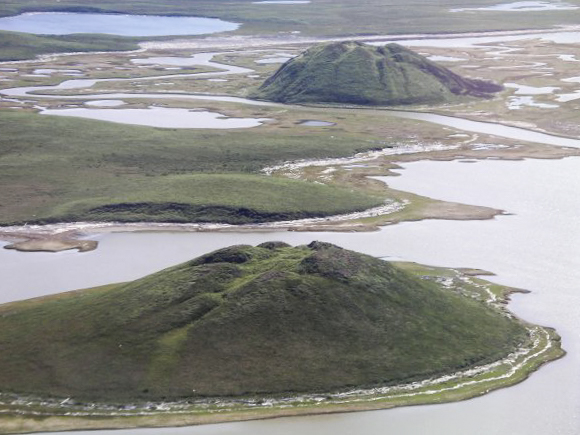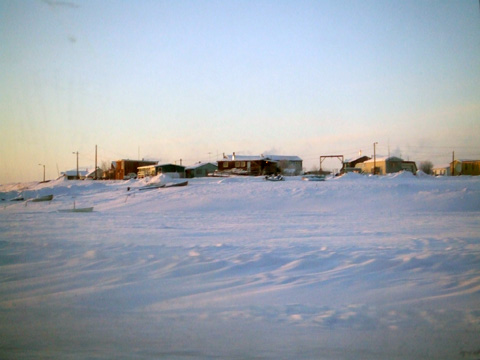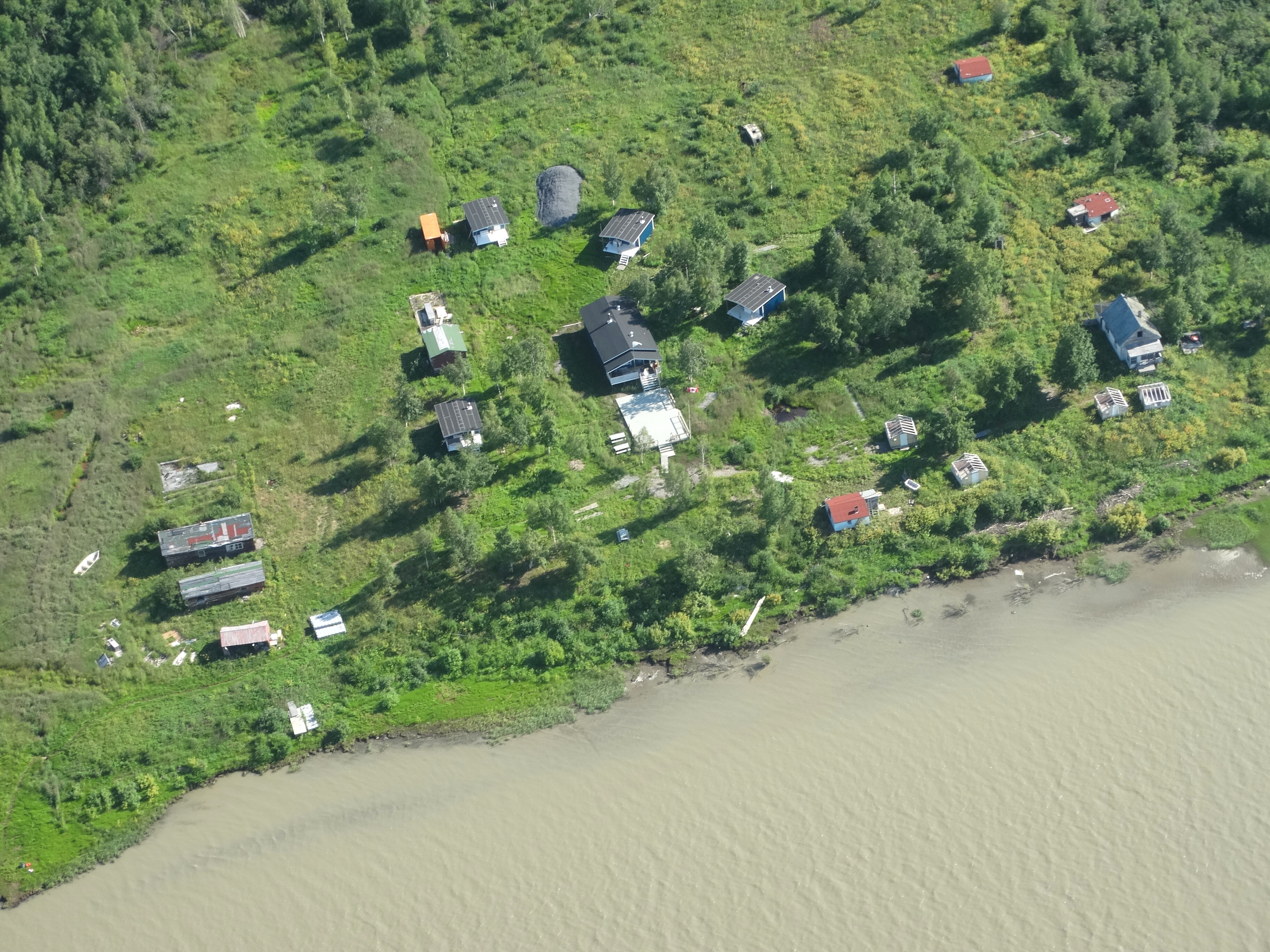|
Inuvialuit
The Inuvialuit (sing. Inuvialuk; ''the real people'') or Western Canadian Inuit are Inuit who live in the western Canadian Arctic region. They, like all other Inuit, are descendants of the Thule who migrated eastward from Alaska. Their homeland – the Inuvialuit Settlement Region – covers the Arctic Ocean coastline area from the Alaskan border, east through the Beaufort Sea and beyond the Amundsen Gulf which includes some of the western Canadian Arctic Islands, as well as the inland community of Aklavik and part of Yukon. The land was demarked in 1984 by the Inuvialuit Final Agreement. History and migration The Inuvialuit Settlement Region was primarily inhabited by ''Siglit'' Inuit until their numbers were decimated by the introduction of new diseases in the second half of the 19th century. Nunamiut, Alaskan Iñupiat, moved into traditional Siglit areas in the 1910s and 20s, enticed in part by renewed demand for furs from the Hudson's Bay Company and European market ... [...More Info...] [...Related Items...] OR: [Wikipedia] [Google] [Baidu] |
Inuvialuit Settlement Region
The Inuvialuit Settlement Region, abbreviated as ISR (; ), located in Canada's western Arctic, was designated in 1984 in the Inuvialuit Final Agreement by the Government of Canada for the Inuvialuit (''the real people''). It spans , including of land and of subsurface mineral rights. The ISR is mainly above the tree line, and includes several sub-regions: the Beaufort Sea, the Mackenzie River delta, the northern portion of Yukon ("Yukon North Slope", Herschel Island), and the northwest portion of the Northwest Territories. The ISR includes both Crown Lands and Inuvialuit Private Lands. Most of the ISR is represented by Nunakput, the territorial electoral district, meaning "our land" in Inuvialuktun. The ISR is one of the four Inuit regions of Canada, collectively known as Inuit Nunangat, represented by the Inuit Tapiriit Kanatami (ITK). The other regions include Nunatsiavut in Labrador, Nunavik in northern Quebec, and the territory of Nunavut. The ISR is the homeland of ... [...More Info...] [...Related Items...] OR: [Wikipedia] [Google] [Baidu] |
Inuvialuit Camp Near Tuktoyaktuk
The Inuvialuit (sing. Inuvialuk; ''the real people'') or Western Canadian Inuit are Inuit who live in the western Canadian Arctic region. They, like all other Inuit, are descendants of the Thule who migrated eastward from Alaska. Their homeland – the Inuvialuit Settlement Region – covers the Arctic Ocean coastline area from the Alaskan border, east through the Beaufort Sea and beyond the Amundsen Gulf which includes some of the western Canadian Arctic Islands, as well as the inland community of Aklavik and part of Yukon. The land was demarked in 1984 by the Inuvialuit Final Agreement. History and migration The Inuvialuit Settlement Region was primarily inhabited by ''Siglit'' Inuit until their numbers were decimated by the introduction of new diseases in the second half of the 19th century. Nunamiut, Alaskan Iñupiat, moved into traditional Siglit areas in the 1910s and 20s, enticed in part by renewed demand for furs from the Hudson's Bay Company and European marke ... [...More Info...] [...Related Items...] OR: [Wikipedia] [Google] [Baidu] |
Inuit Nunangat
Inuit Nunangat (; ), formerly Inuit Nunaat (), is the homeland of the Inuit in Canada. This Arctic homeland consists of four Northern Canada, northern Canadian regions called the Inuvialuit Settlement Region (, home of the Inuvialuit and the northern portion of the Northwest Territories and Yukon), the territory Nunavut (), Nunavik () in northern Quebec, and Nunatsiavut of Newfoundland and Labrador. Etymology Inuit of Canada originally used the Greenlandic Inuit term ''Nunaat'' which excludes the waters and ice. In 2009 the Inuit Tapiriit Kanatami formally switched to the Inuktitut ''Nunangat'' in 2009 to reflect the integral nature "land, water, and ice" have to Inuit culture. History Inuit settlement Inuit are the most recent Indigenous peoples of the Americas, Indigenous arrivals on the continent aside from Métis. Inuit ancestors known as the Thule people, Thule settled the Arctic, replacing the previous dominant Dorset culture (Tuniit) over the course of around 200 yea ... [...More Info...] [...Related Items...] OR: [Wikipedia] [Google] [Baidu] |
Inuit
Inuit (singular: Inuk) are a group of culturally and historically similar Indigenous peoples traditionally inhabiting the Arctic and Subarctic regions of North America and Russia, including Greenland, Labrador, Quebec, Nunavut, the Northwest Territories, Yukon (traditionally), Alaska, and the Chukotsky District of Chukotka Autonomous Okrug. The Inuit languages are part of the Eskaleut languages, also known as Inuit-Yupik-Unangan, and also as Eskimo–Aleut. Canadian Inuit live throughout most of Northern Canada in the territory of Nunavut, Nunavik in the northern third of Quebec, the Nunatsiavut in Labrador, and in various parts of the Northwest Territories and Yukon (traditionally), particularly around the Arctic Ocean, in the Inuvialuit Settlement Region. These areas are known, by Inuit Tapiriit Kanatami and the Government of Canada, as Inuit Nunangat. In Canada, sections 25 and 35 of the Constitution Act of 1982 classify Inuit as a distinctive group of Abo ... [...More Info...] [...Related Items...] OR: [Wikipedia] [Google] [Baidu] |
Inuvialuktun
Inuvialuktun (part of ''Western Canadian Inuit'' / ''Inuktitut'' / '' Inuktut'' / '' Inuktun'') comprises several Inuit language varieties spoken in the northern Northwest Territories by Canadian Inuit who call themselves ''Inuvialuit''. Some dialects and sub-dialects are also spoken in Nunavut. and Distribution and varieties Inuvialuktun is spoken by the Inuit of the Mackenzie River delta, Banks Island, part of Victoria Island and the Arctic Ocean coast of the Northwest Territories – the lands of the Inuvialuit Settlement Region. It was traditionally subsumed under a broader ''Inuktitut''. Rather than a coherent language, Inuvialuktun is a politically motivated grouping of three quite distinct and separate varieties. It consists of '' Sallirmiutun'' (formerly Siglitun; Inuvialuktun proper), the '' Kangiryuarmiutun'' dialect of Inuinnaqtun on Victoria Island in the East and the '' Uummarmiutun'' dialect of Iñupiaq around Inuvik and Aklavik in the West. Inuvialuktun ... [...More Info...] [...Related Items...] OR: [Wikipedia] [Google] [Baidu] |
Northwest Territories
The Northwest Territories is a federal Provinces and territories of Canada, territory of Canada. At a land area of approximately and a 2021 census population of 41,070, it is the second-largest and the most populous of Provinces and territories of Canada#Territories, the three territories in Northern Canada. Its estimated population as of the first quarter of 2025 is 45,074. Yellowknife is the capital, most populous community, and the only city in the territory; its population was 20,340 as of the 2021 census. It became the territorial capital in 1967, following recommendations by the Carrothers Commission. The Northwest Territories, a portion of the old North-Western Territory, entered the Canadian Confederation on July 15, 1870. At first, it was named the North-West Territories. The name was changed to the present Northwest Territories in 1906. Since 1870, the territory has been divided four times to create new provinces and territories or enlarge existing ones. Its current ... [...More Info...] [...Related Items...] OR: [Wikipedia] [Google] [Baidu] |
Aklavik
Aklavik (Inuvialuktun: ''Akłarvik'') (from the Inuvialuktun meaning '' barrenground grizzly place'') is a hamlet located in the Inuvik Region of the Northwest Territories, Canada. Until 1961, with a population over 1,500, the community served as the regional administrative centre for the territorial government. Because of repeated flooding in this area, the government developed Inuvik to the east. It was meant to entirely replace Aklavik, but many of the residents of the original community persevered and kept Aklavik going. Its 2018 population was 623. The hamlet's mayor is Andrew Charlie. History Aklavik began to develop in the early 1900s after the Hudson's Bay Company opened a trading post in 1912. The Roman Catholic Church later established a mission here in 1926. Located on the Peel Channel, the community became a transportation hub in the Mackenzie. It was in a good trapping area. Aklavik became part of the Northwest Territories and Yukon Radio System (NWT&Y) in ... [...More Info...] [...Related Items...] OR: [Wikipedia] [Google] [Baidu] |
Reindeer Station
Reindeer Station (known as in the Inuvialuktun language) is an uninhabited locality in the Northwest Territories, Canada. It is located in the Caribou Hills, along the Mackenzie River's eastern channel. The community was established in 1932 to house a herd of 3,442 reindeer purchased by the Government of Canada. The venture was intended to replace the traditional livelihood of the local Indigenous peoples, but few chose to become reindeer herders, so the government eventually sold the animals. Reindeer Station was abandoned in 1969. Most of its residential buildings were relocated to the larger centres of Tuktoyaktuk and Inuvik. History In the early 1920s, the Government of Canada received reports that the wild caribou herds of the Western Arctic were in steep decline. This would have placed the local Inuvialuit in danger of starvation. A similar event in 1890s Alaska led the United States Government to purchase a large herd of reindeer from Europe, introducing Native Alaskan ... [...More Info...] [...Related Items...] OR: [Wikipedia] [Google] [Baidu] |
Eskimo
''Eskimo'' () is a controversial Endonym and exonym, exonym that refers to two closely related Indigenous peoples: Inuit (including the Alaska Native Iñupiat, the Canadian Inuit, and the Greenlandic Inuit) and the Yupik peoples, Yupik (or Siberian Yupik, Yuit) of eastern Siberia and Alaska. A related third group, Aleuts, who inhabit the Aleutian Islands, are generally excluded from the definition of ''Eskimo''. The three groups share a relatively recent common ancestor, and speak related languages belonging to the family of Eskaleut languages. These circumpolar peoples have traditionally inhabited the Arctic and subarctic regions from eastern Siberia (Russia) to Alaska (United States), Northern Canada, Nunavik, Nunatsiavut, and Greenland. Some Inuit, Yupik, Aleut, and other individuals consider the term ''Eskimo'', which is of a disputed etymology, to be pejorative or even offensive. ''Eskimo'' continues to be used within a historical, linguistic, archaeological, and cultural ... [...More Info...] [...Related Items...] OR: [Wikipedia] [Google] [Baidu] |
Siglit
The Sallirmiut (formerly Siglit) are an Inuit group residing in the Inuvialuit Settlement Region. The Sallirmiut are regarded as part of the Inuvialuit, or western Canadian Inuit. Inuvialuit is a modern political identity that brings together Sallirmiut with two other distinct Inuit groups, Ummarmiut and Kangiryurmiut. During the land claims process for the Inuvialuit Final Agreement, the Committee For Original People's Entitlement understood the importance of collective bargaining power and encouraged those from these three Inuit groups to recognize their similarities and fight for a land claim together. The Sallirmiut speak Siglitun or Sallirmiutun, a severely endangered dialect of Inuvialuktun. In this dialect, the name Sallirmiut means "the people located farthest along the coastline", referring to their historical occupation of regions around the Mackenzie Delta. The Sallirmiut are the original Inuit group who lived in this region prior to European contact. When Eur ... [...More Info...] [...Related Items...] OR: [Wikipedia] [Google] [Baidu] |
Beaufort Sea
The Beaufort Sea ( ; ) is a marginal sea of the Arctic Ocean, located north of the Northwest Territories, Yukon, and Alaska, and west of the Canadian Arctic Archipelago. The sea is named after Sir Francis Beaufort, a Hydrography, hydrographer. The Mackenzie River, the longest in Canada, empties into the Canadian part of the Beaufort Sea west of Tuktoyaktuk, which is one of the few permanent settlements on the sea's shores. The sea, characterized by severe climate, is frozen over most of the year. Historically, only a narrow pass up to opened in August–September near its shores, but recently due to climate change in the Arctic the ice-free area in late summer has greatly enlarged. Until recently, the Beaufort Sea was known as an important reservoir for the replenishment of Arctic sea ice. Sea ice would often rotate for several years in the Beaufort Gyre, the dominant ocean current of the Beaufort Sea, growing into sturdy and thick multi-year ice. Claims that the seacoast was p ... [...More Info...] [...Related Items...] OR: [Wikipedia] [Google] [Baidu] |
Uummarmiutun
Uummarmiutun (), Uummaġmiutun or Canadian Iñupiaq is the variant of Iñupiaq (or Inuvialuktun) spoken by the Uummarmiut, part of the Inuvialuit, who live mainly in the communities of Inuvik and Aklavik in the Northwest Territories of Canada. This dialect is essentially the same as that spoken by the Inupiat of Alaska, and is present in Canada because of migration from Alaska in the 1910s, reoccupying traditionally Siglit Inuit lands abandoned during the devastating disease outbreaks of the previous century. Because Inuvik and Aklavik are ethnically mixed communities where English is the near-exclusive language of co ... [...More Info...] [...Related Items...] OR: [Wikipedia] [Google] [Baidu] |








